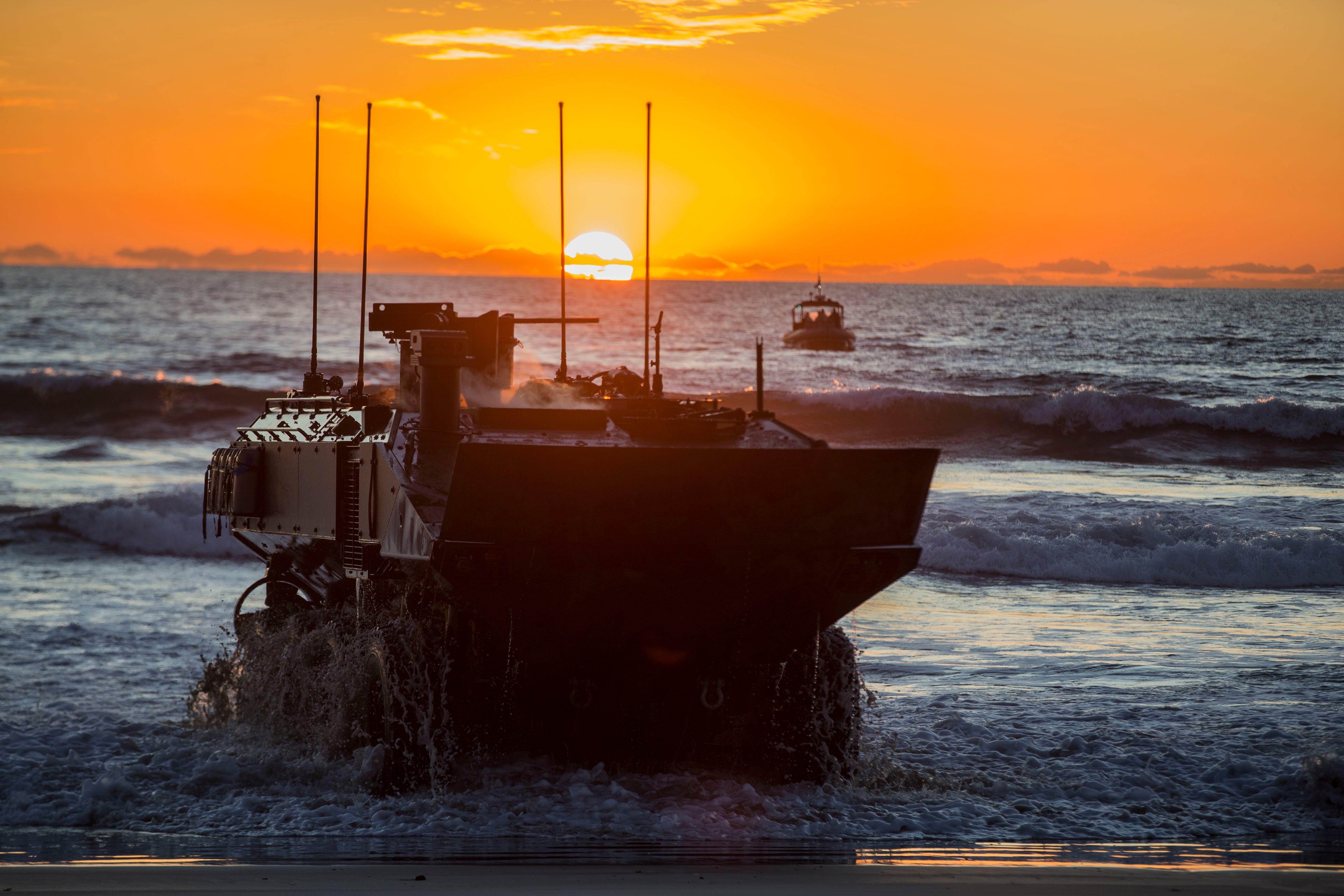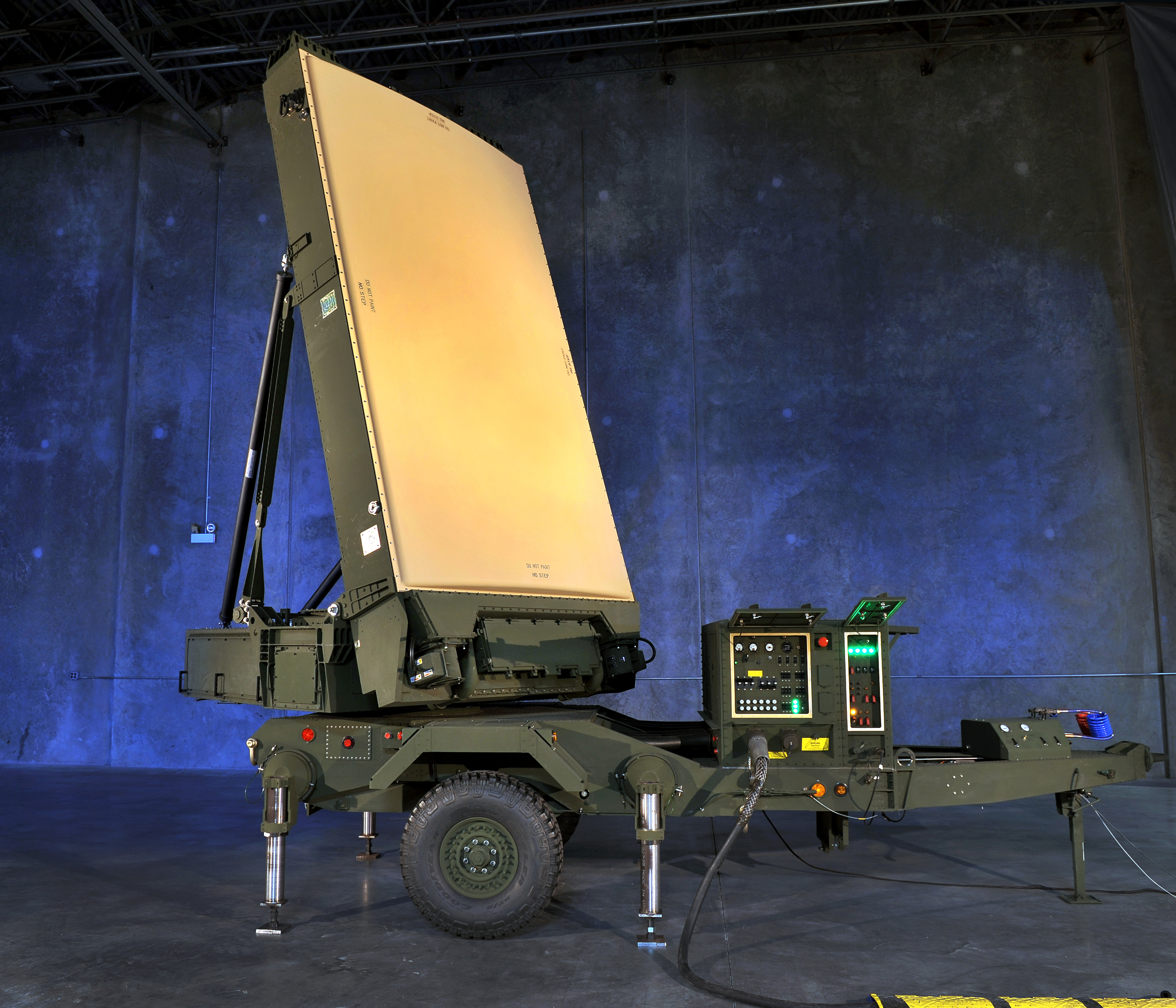
Navy and Marine Corps acquisition efforts are increasingly colored by the services’ focus on boosting naval integration between the services in support of distributed maritime operations and expeditionary advance base operations (EABO).
The Marines are expanding their primary command and control system to loop in amphibious warships at sea and small units ashore conducting EABO missions. And the Marines’ radar in the future will be able to more seamlessly switch between mission sets, so that Marines on the ground can send a variety of types of targeting information to a variety of shooters in all domains, the program executive officer for land systems said this week at the virtual Modern Day Marine conference.
John Garner said in a Sept. 23 panel presentation that the Commandant’s Planning Guidance and the National Defense Strategy call for the Marines to focus on integrated air and missile defense and protected combat mobility, which encompasses most of PEO LS’s major acquisition efforts today.
For IAMD, the Marines rely on the trifecta of the AN/TPS-80 Ground/Air Task Oriented Radar (G/ATOR) as the sensor, Common Aviation Command and Control System (CAC2S) as the communications and management system, and the Ground-Based Air Defense family of systems as the shooters.
CAC2S reached full operational capability earlier this year and is fully fielded. But Garner said that, while the system has met the Marines’ original intent, two new efforts are looking to expand its utility in naval and joint operations.
“It’s been adopted by the Navy to put on the big-deck amphibs and it’s being integrated – and this is part of Naval Integrated Fire Control – but our systems are being placed on the amphibs because of the communications capability that they bring to tie together air assets and shipborne assets and ground-based assets into one common command and control picture. So there’s continuing development and fielding of CAC2S for that purpose,” he said.
“Additionally, there’s work on a small form factor CAC2S. … The intent there is for the truly expeditionary Expeditionary Advance Base Operations units that have to be extremely mobile and move very fast, there’s a smaller form factor CAC2S that will allow them to link in with all the other command and control so that they’re tied in, again, with all the aviation assets and ship assets.”
Garner told reporters in a call after his panel that CAC2S finished fielding more than a year ahead of schedule and reached full operational capability nearly two months ago. With its ability to take inputs from both the G/ATOR and the F-35B Joint Strike Fighter, he said it will be important to have this command and control node everywhere the Marines are, whether in larger units ashore, small units hopping around the littorals, or in full Marine Expeditionary Units sailing aboard Navy ships.
“That allows those amphibs not only to digitally talk and get data from the F-35s that are now deploying with some of those but to be completely, again, linked in to the Marine forces on the shore in the overall air command and control picture, which is a key component of everything we’re doing with force redesign and the future in terms of supporting littoral maneuver and expeditionary advance base operations.”
As for G/ATOR, Garner said there are two variants today that are fielded to different types of units, but the differences between them are minimal and technically they could alternate what kind of functions they perform. G/ATOR Block I goes to Marine air control squadrons for an air defense role, and G/ATOR Block II goes to artillery units to help locate incoming rockets and missiles.

“In the future, we’re going to be looking for things that allow them to be fully integrated into the overall intelligence and sensor plan and picture so that, depending on the situation, these radars can alternate functions and they can all provide information to eventually be passed over the command and control systems to whatever shooter is necessary to deal with whatever threat is out there,” Garner said in his panel presentation.
A dozen radars have been fielded so far, with more to come in Fiscal Year 2021, he said.
On the protected mobility mission, Garner said the Amphibious Combat Vehicle just finished its initial operational test and evaluation on Sept. 4 and is pending a full-rate production decision in late November.
“The ACV status right now is frankly good. We’ve completed the IOT&E, we will begin early deployment fielding essentially next week to a unit, the first to be fielded with this system. We anticipate that that fielding will be complete sometime in October,” Garner said during a question and answer period after his panel presentation.
“We are prepared for and believe we’re in a very good position for a full-rate production decision at the end of November. We currently are also in low-rate initial production, and upon receipt of funding in [Fiscal Year 2021], if we have a successful FRP decision, which we fully anticipate, we will go into full-rate production in the first quarter of FY 21.”
Garner told reporters after the event that a second Southern California unit will start fielding in January, and after that a new unit will start transitioning to the new vehicle every two or three months.

Garner said all the activity taking place now is for the personnel variant ACV. Over the next five or six years the service will be pursuing a command and control variant, a 30mm gun variant and a recovery variant.
As the legacy Amphibious Assault Vehicles come out of the fleet to make room for the ACVs, Garner said there will be opportunity for “robust foreign military sales” to send the legacy vehicles to international partners.
The PEO Land Systems portfolio isn’t the only one being shaped by the desire for greater naval integration to support distributed maritime operations and expeditionary advance base operations. The Navy, too, recently announced it would invest $35.6 million to insert a design change into its fourth and fifth Expeditionary Sea Base ships to allow Marine units to better leverage the ship.
The ESBs were originally meant to support airborne mine countermeasures and special forces operations, though the Marine Corps expressed interest in the ship early and often. USNI News visited the first ESB, USS Lewis B. “Chesty” Puller (ESB-3) in U.S. 5th Fleet in 2018, and the Marines had been much more active in visiting the ship to experiment with it than had the MCM and SOF communities.
Following the Sept. 4 contract announcement, Naval Sea Systems Command spokesman Alan Baribeau told USNI News that “the requirement to berth 100 additional military personnel is based on the [military crew] footprint increase to meet Operational Commander’s needs and a requirement to embark elements of a USMC Special Purpose Marine Air-Ground Task Force. It also includes expansion of equipment to support additional roles. The additional berthing, laundry, stowage and messing spaces will be accomplished through a structural modification to the existing Forward house. No current mission capabilities, mission spaces or functions, were impacted by this change.”
Asked why the Marine Corps wanted these changes – a sign that they planned to spend a significant amount of time on the ships going forward – Marine Corps headquarters spokeswoman Capt. Casey Littesy told USNI News that, “as the U.S. Marine Corps modernizes the force and prepares strategies to deter and win against a peer threat, releasable specifics about our capabilities, tactics, techniques, and procedures will be limited. Current force design initiatives and planning efforts are focused on adapting capabilities to properly shape the Marine Corps’ contributions to the joint fight. Our naval expeditionary force will reflect a holistic change to how we train and fight. Integrated operating concepts, capabilities, doctrine, personnel assignments, education and training will ensure that our naval team cannot be excluded from any region in a contested environment.”





